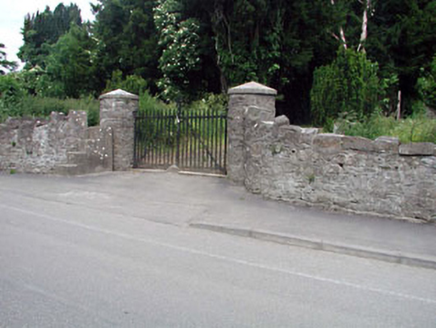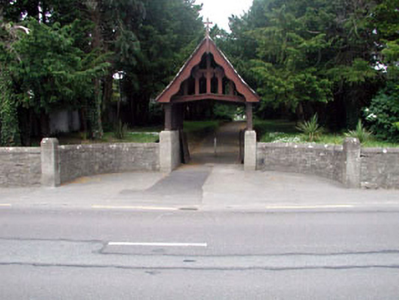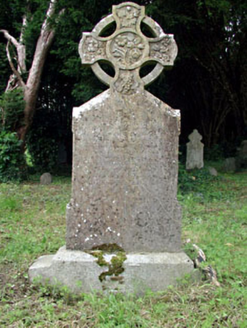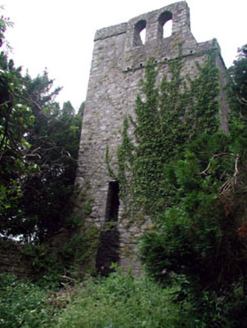Survey Data
Reg No
11809005
Rating
Regional
Categories of Special Interest
Archaeological, Artistic, Historical, Social
Original Use
Graveyard/cemetery
In Use As
Graveyard/cemetery
Date
1850 - 2000
Coordinates
292663, 229920
Date Recorded
18/06/2002
Date Updated
--/--/--
Description
Graveyard with various cut-stone grave markers, c.1850-present. Remains of detached rubble stone medieval church, c.1600, to south comprising single-bay four-stage tower on a square plan with round-headed openings to parapet. Now in ruins. Roof now gone. Rubble stone walls including advanced sections to upper stage. Square-headed opening to first stage. No dressings or fittings. Round-headed openings (paired) to upper stage. Rubble stone voussoirs. No fittings. Overgrown grounds surrounding. Gateway, c.1850, to south comprising pair of rubble stone circular piers with cut-stone capping and wrought iron gates having rubble stone curved flanking walls including steps (four) to stile. Lych gate, c.1920, to east comprising cut-stone plinth walls, timber piers over having gabled canopy with decorative timber work to gable and cross finial to apex. Rubble stone curved flanking walls with cut-stone piers.
Appraisal
This graveyard is of considerable social and historical importance in Straffan and attests to the long-standing ecclesiastical presence in the village. Sited in the centre of the village the picturesque graveyard retains some fragments of a medieval church on the site, which is of archaeological interest. Latterly converted to use as a graveyard the resulting cut-stone markers of various periods are of some artistic merit. The lych gate to east is a rare feature in the Irish landscape and reflects the influence of English settlers in the locality – it is an imposing and attractive feature on the side of the road and serves to identify the graveyard in the locality. The construction of the structure in cut-stone and timber is evidence of the high quality of stone masonry and carpentry practised in the locality. An earlier gateway to south is also of similar interest, with gate piers of a vernacular form, and retaining gates that are a fine example of early surviving iron work.







